Cơm Tấm Sườn Que: Basic Information
Pronunciation
Alternative Name(s)
Dish Type
Course
Mealtime
Popular Variations
Cơm Tấm Sườn Que: Ingredients and Preparation
Main Ingredients
Main Cooking Method
Preparation Process
Cơm Tấm Sườn Que: A Deep Dive
Cultural Significance
Taste
Texture
Aroma
Color
Serving Style
Serving Temperature
Accompaniment
- Cucumber Slices
- Tomatoes
- Soup Broth
Occasions
Seasons
Special Diets
Calories
Popularity
Popular Similar Dishes
- Cơm Tấm
- Bibimbap
- Donburi
- Arroz con Pollo
Popular Dining Area
Cơm tấm sườn que (or cơm tấm sườn cọng) is a variation of cơm tấm, a celebrated dish from Vietnam, especially prevalent in the Southern region. Originally a meal for rice farmers using unsellable grains, it’s now a popular dish for any mealtime.
The dish consists of steamed broken rice and grilled pork ribs (sườn que or sườn cọng), often accompanied by shredded pork skin (bì) and steamed egg patty (chả), garnished with pickled vegetables and scallion oil. It is tied together with nước mắm tỏi ớt, a sweet, sour, and savory Vietnamese sauce.
Allow me to guide you through the details of this dish, including its features, ingredient list, optional extras, sides, benefits and drawbacks, common queries, and dishes that are alike.
Key Points
Cơm Tấm Sườn Que Images
What Are The Main Components of Cơm Tấm Sườn Que?
Cơm tấm sườn que typically includes the following 5 main components:
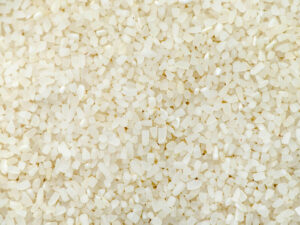
Broken Rice
This is a type of fragmented rice grain, traditionally seen as the lesser grade of rice but has become popular for its unique texture and taste.

Pork Ribs
Typically marinated and grilled, these ribs are a central component of the dish, offering a savory and slightly sweet flavor.
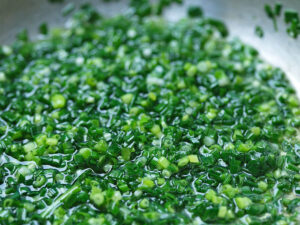
Scallion Oil
A simple yet flavorful garnish made from scallions and oil, often used in Vietnamese cuisine to add a burst of aroma and taste.
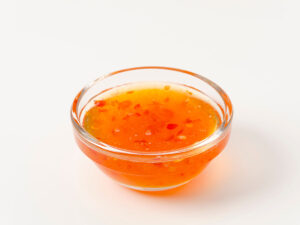
Nước Mắm Tỏi Ớt (Vietnamese Dipping Sauce)
A crucial element in many Vietnamese dishes, this sauce typically combines fish sauce, garlic, chili, and sometimes a sweetening agent, balancing the flavors of the dish.

Pickled Vegetables
Often consisting of carrots and daikon radishes, these pickled vegetables add a refreshing and tangy aspect to balance the savory components.
In addition to these essentials, the dish can be customized with a variety of extra toppings, adding layers of flavor and texture to this classic Vietnamese meal.
What Are Additional Toppings for Cơm Tấm Sườn Que?
Cơm tấm sườn que can be enhanced with a variety of additional toppings. Here are 4 most popular options to consider:
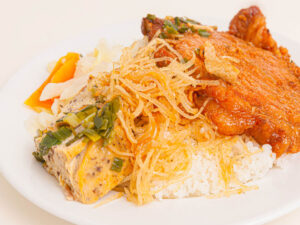
Shredded Pork Skin
This ingredient adds a distinctive texture and flavor, providing a contrast to the other components.
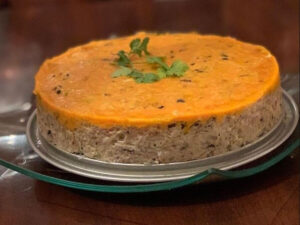
Egg Meatloaf
This is a Vietnamese-style meatloaf made with ground pork, eggs, and various seasonings, steamed or baked to a firm consistency.

Sunny-side-up Egg
Sunny-side-up egg can be added over a bed of broken rice.

Chinese Sausage
This is a type of sweet and savory sausage commonly used in Southeast Asian cuisines. In Cơm Tấm Sườn Que, it’s often sliced and either steamed or lightly fried.
To complete the meal, consider pairing these toppings with traditional Vietnamese accompaniments for the best experience.
What to Serve with Cơm Tấm Sườn Que?
Cơm tấm sườn que, a popular Vietnamese dish, pairs wonderfully with a few simple yet refreshing sides. Here’s what you can serve alongside it:

Cucumber Slices
Fresh cucumber slices provide a crisp and cooling contrast to the rich flavors of the grilled pork in cơm tấm sườn que. They add a refreshing crunch and help balance the meal.
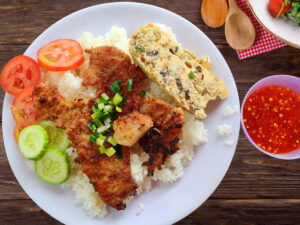
Tomatoes
Like cucumbers, fresh tomato slices add a juicy, sweet, and slightly acidic element. They complement the savory pork and enhance the overall flavor profile of the dish.
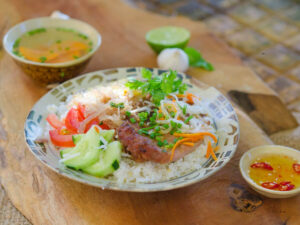
Soup Broth
A light, clear soup often accompanies Vietnamese meals, including cơm tấm sườn que. It can be a simple broth with hints of garlic, onion, and a bit of greens like scallions or cilantro. This soup helps cleanse the palate and adds a soothing element to the meal.
While these accompaniments add freshness, balance, and a soothing element to the meal, understanding its advantages and disadvantages is essential for creating a well-rounded and enjoyable dining experience.
Pros and Cons of Eating Cơm Tấm Sườn Que
Here’s a breakdown of the good and bad aspects of this dish:
Pros
Cons
Additionally, be sure to check out the frequently asked questions.




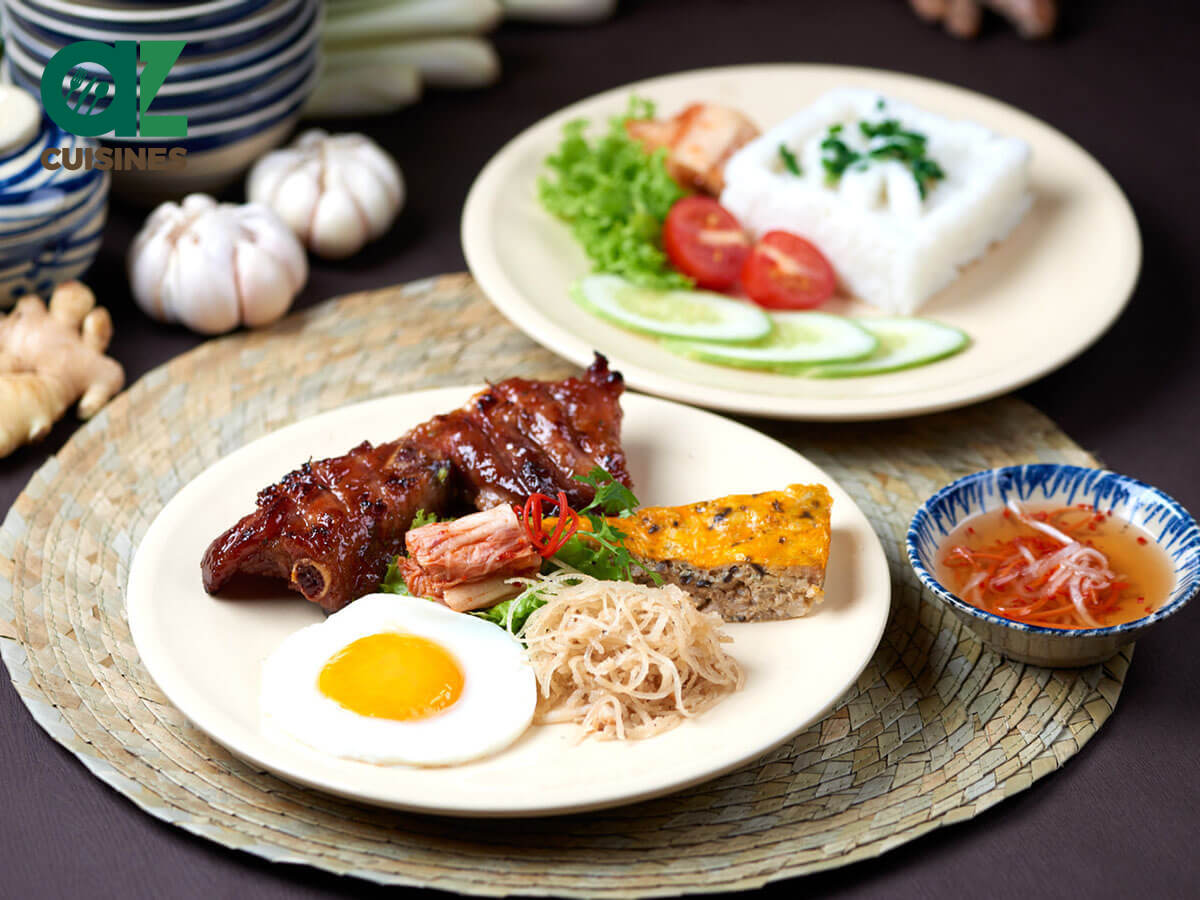
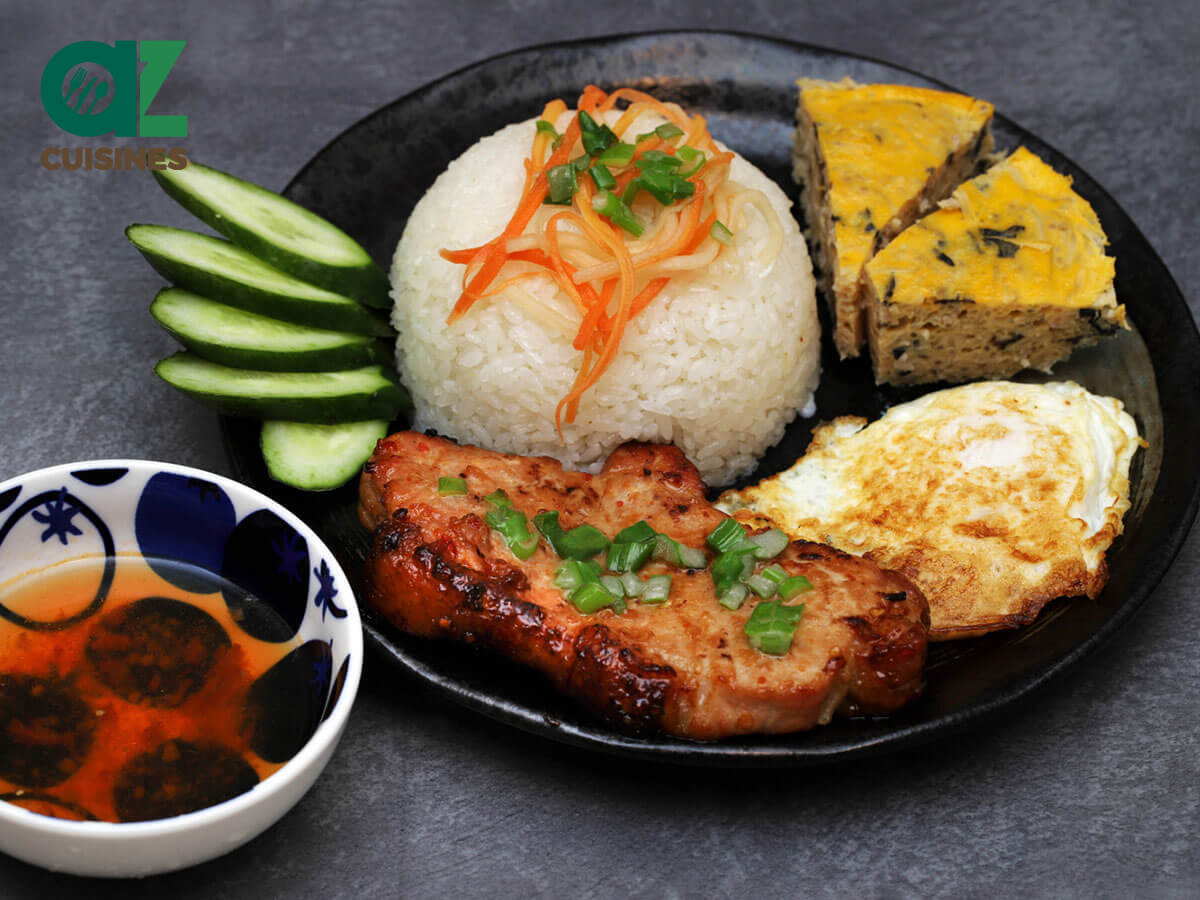
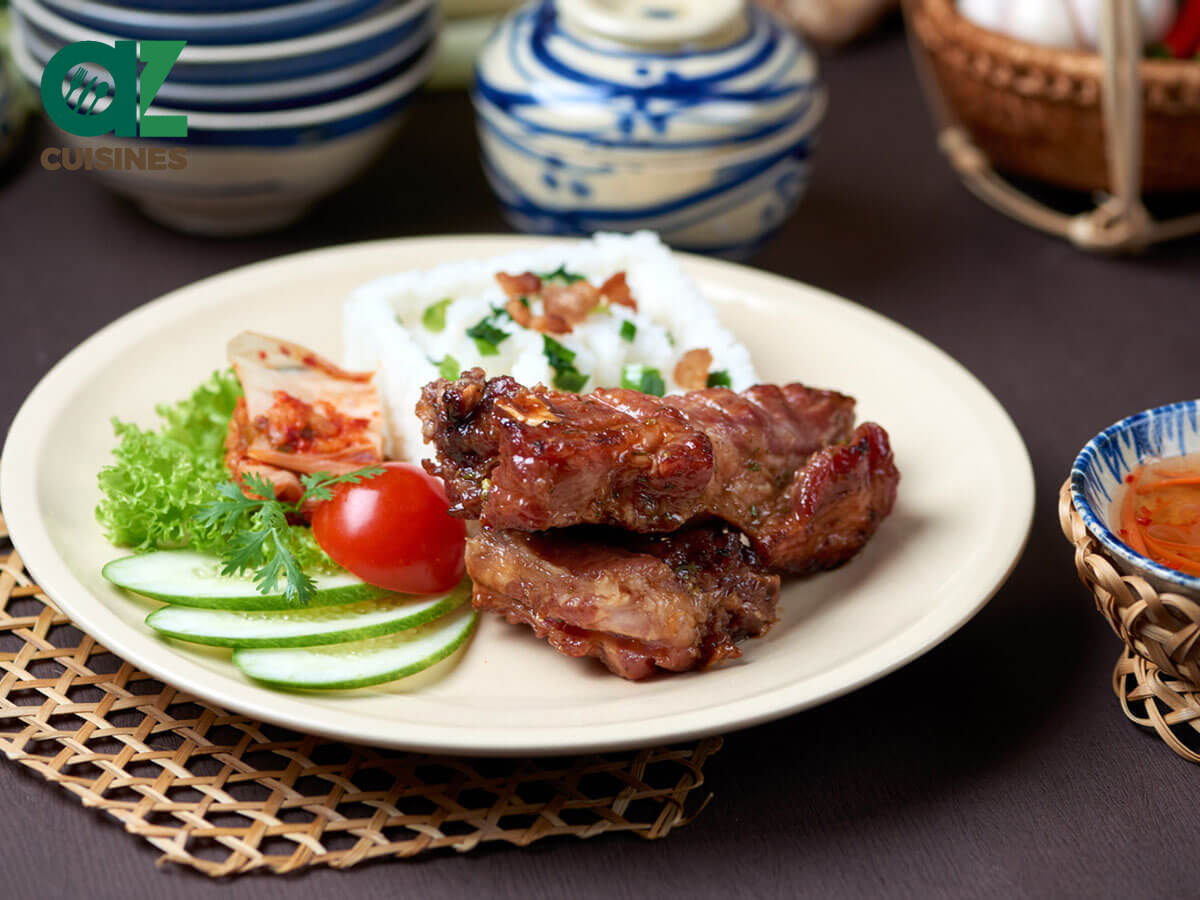

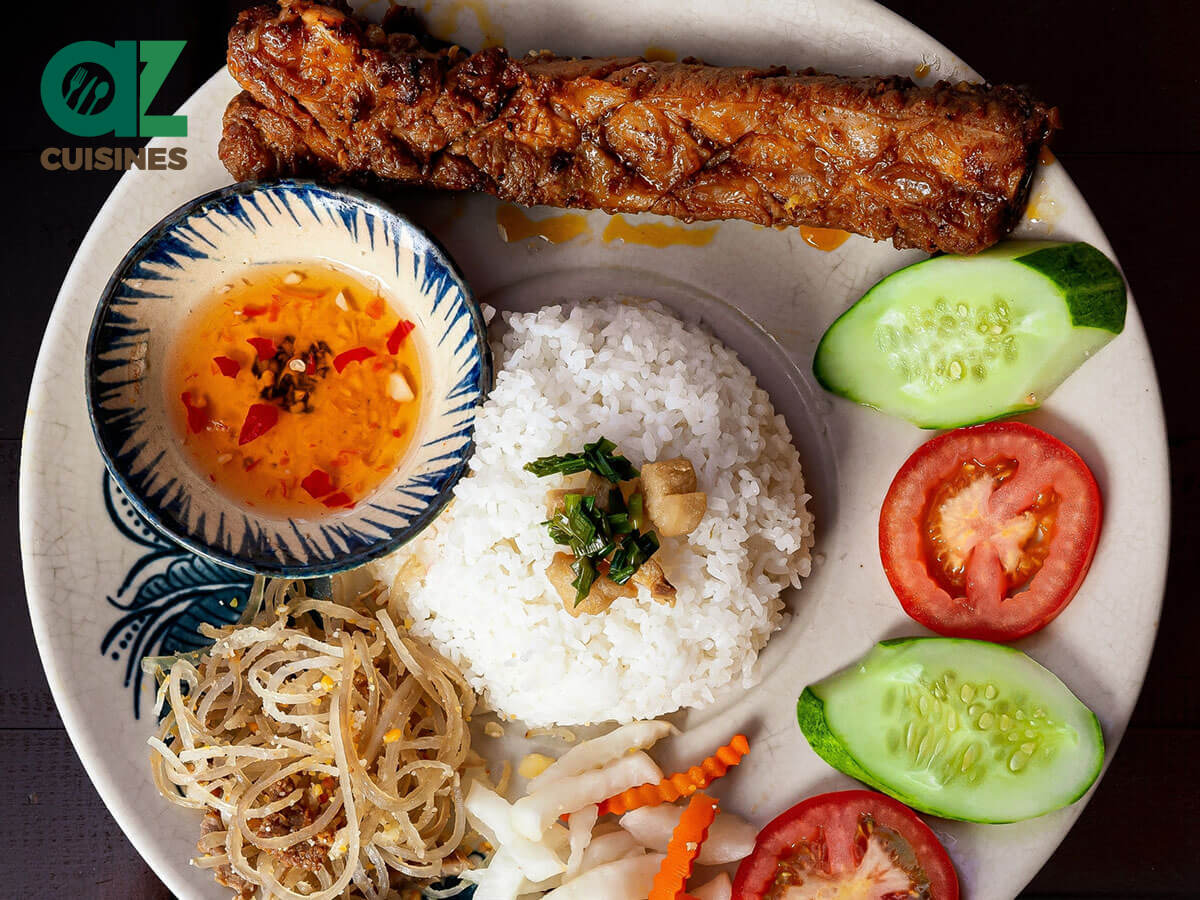
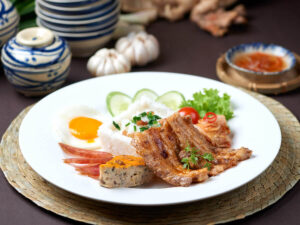
Truc Tran (Kris)
Senior Food Editor
Expertise
Home Cooking, Meal Planning, Recipe Development, Baking and Pastry, Food Editor, Cooking-video Maker, Vietnamese Food Evaluation Expert
Education
Truc Tran (Kris), an experienced food writer and editor, is great at exploring and describing global cuisines, from simple street food to fancy dining. In her writing, she skillfully mixes different flavors, cooking methods, and culinary traditions, showing the unique character of various cultures through their food and drinks. On azcuisines.com, Kris highlights her knowledge, especially in Asian cuisine and worldwide traditional dishes.